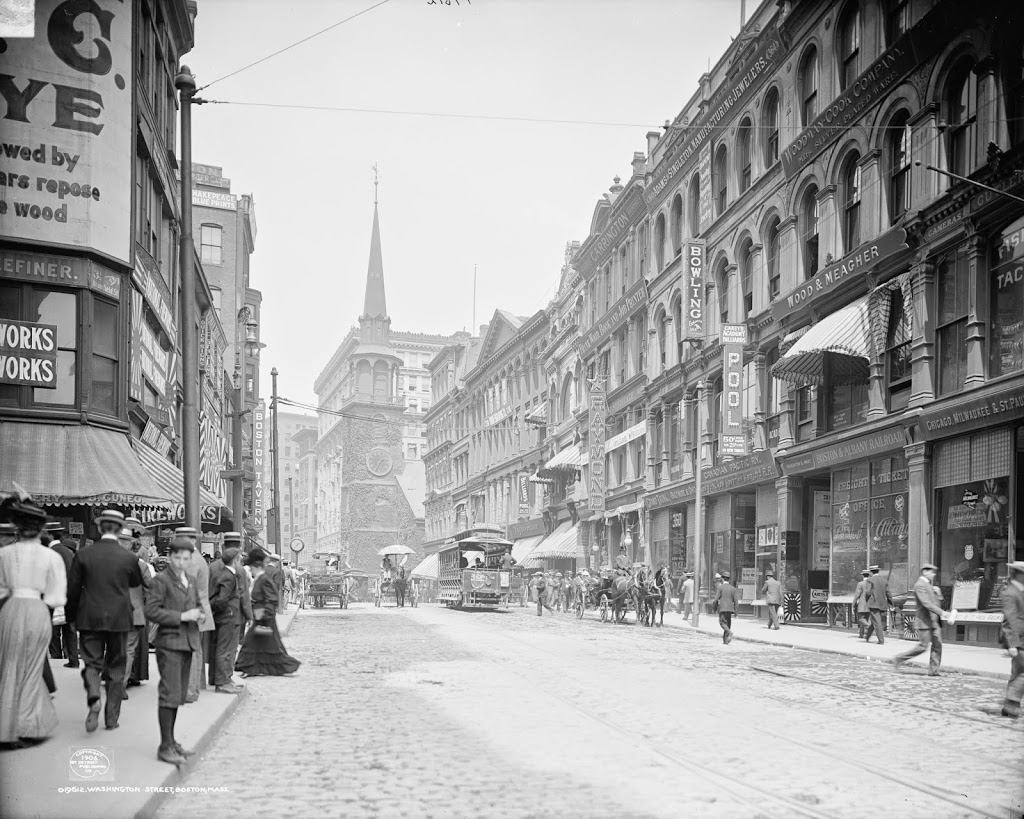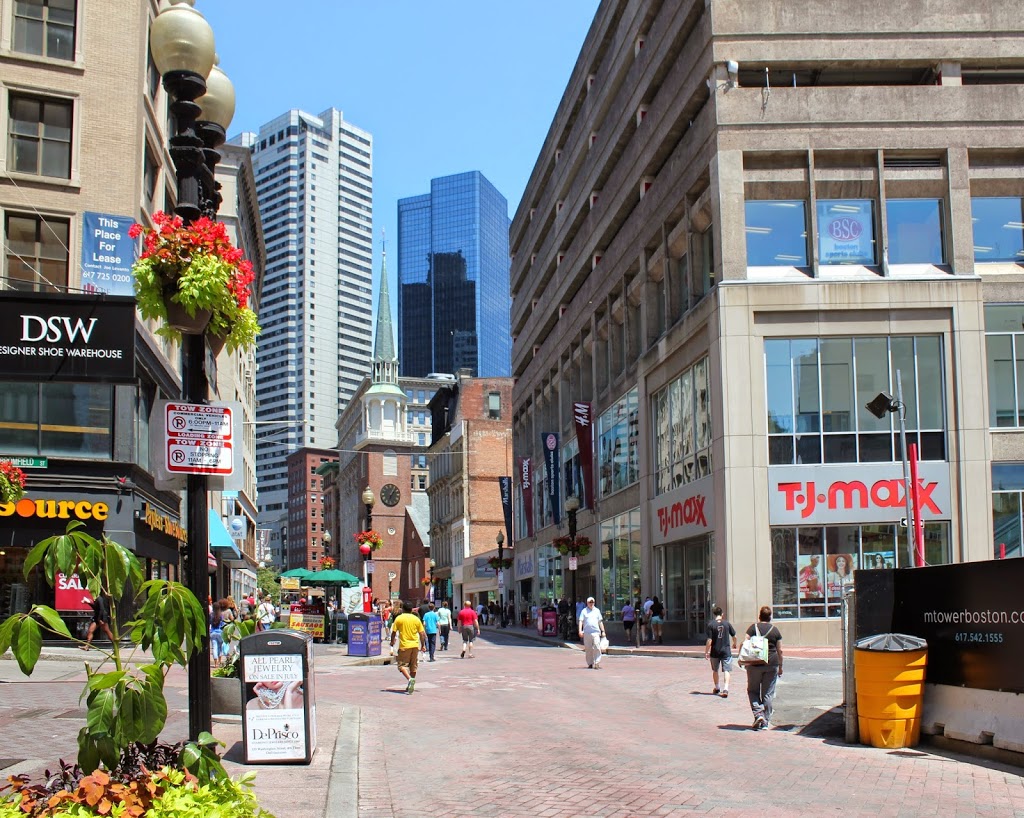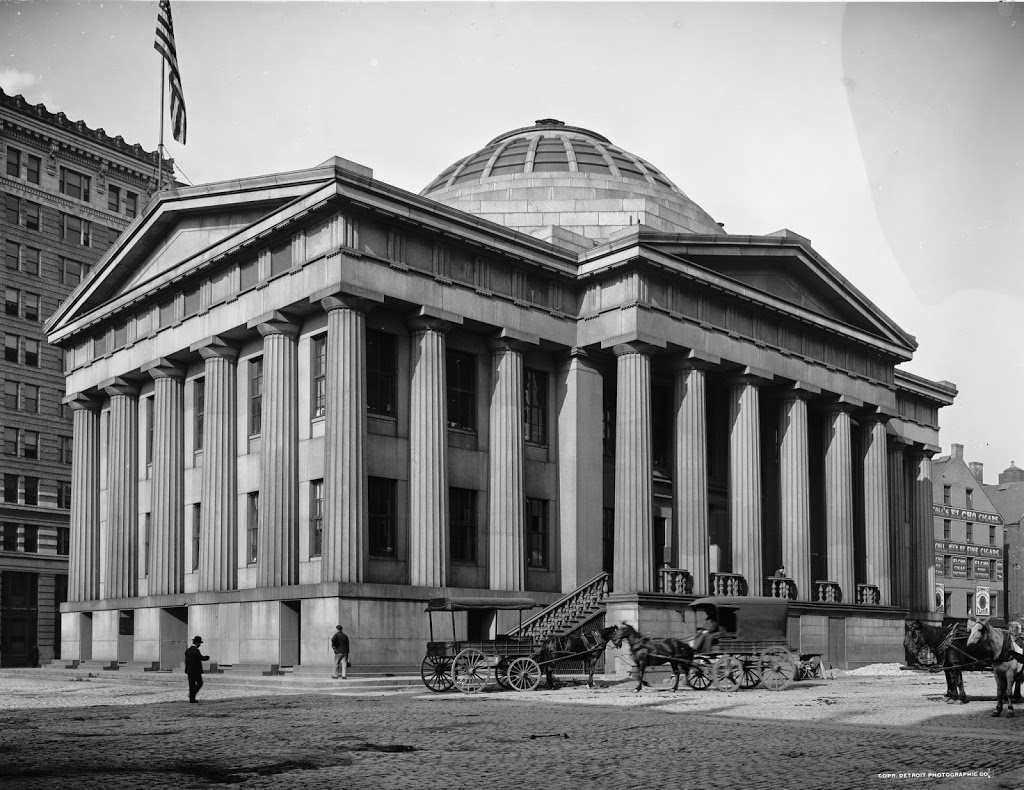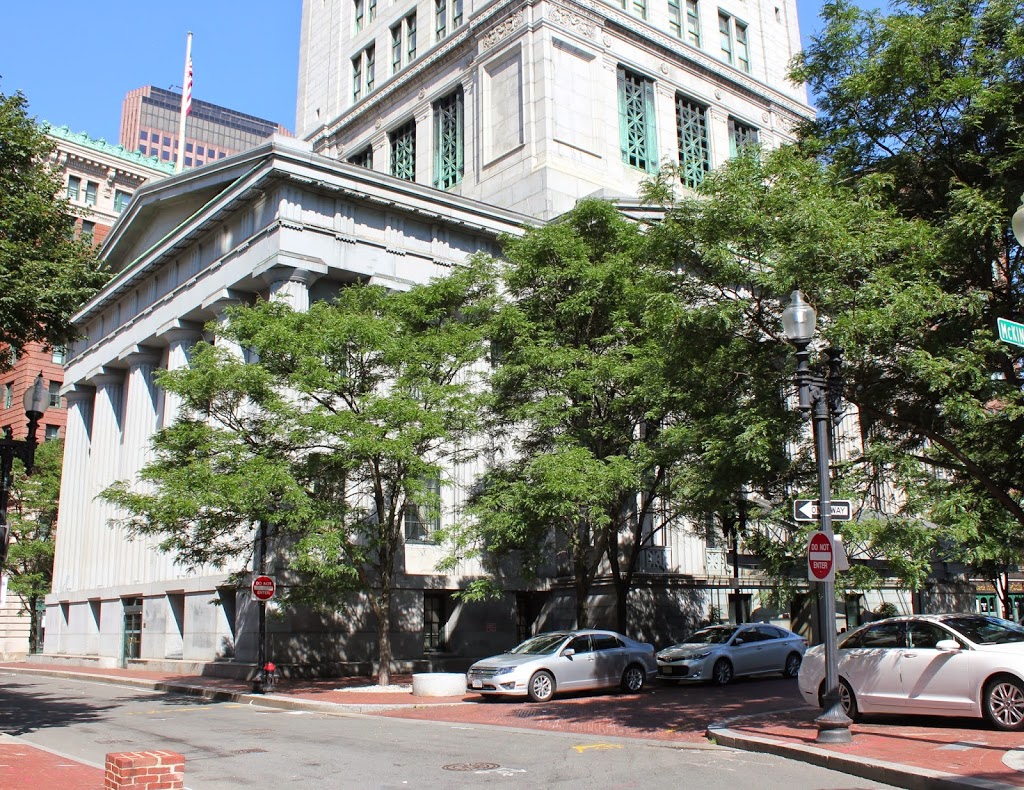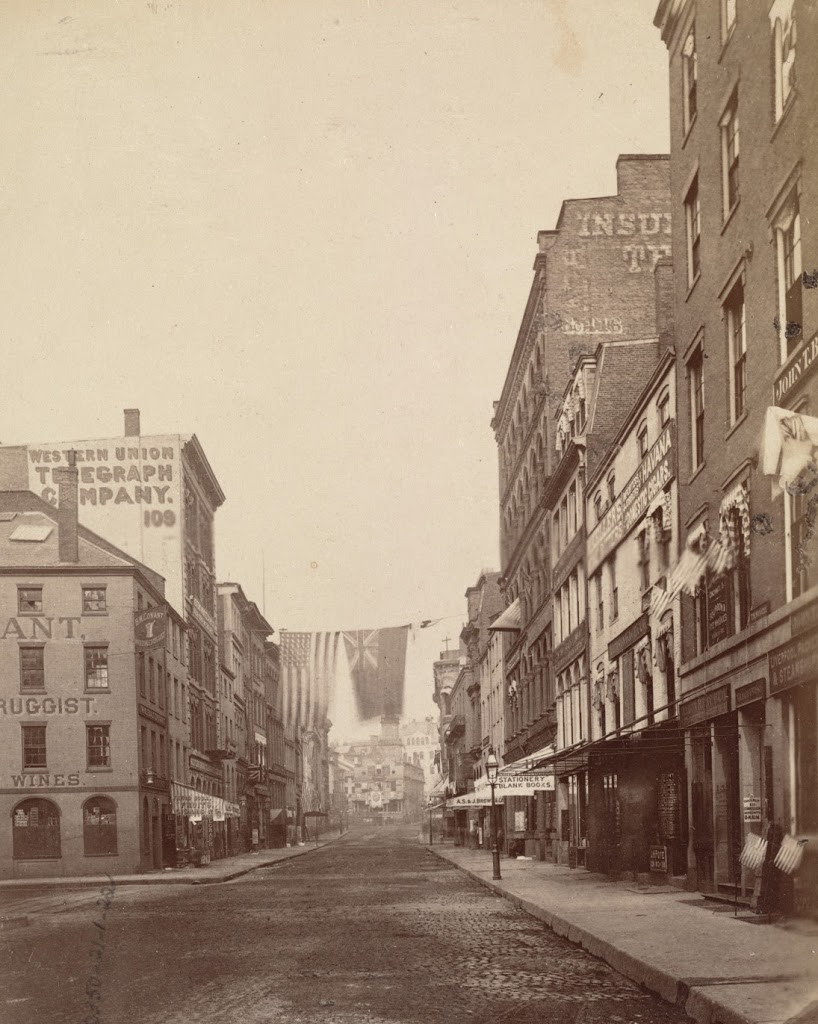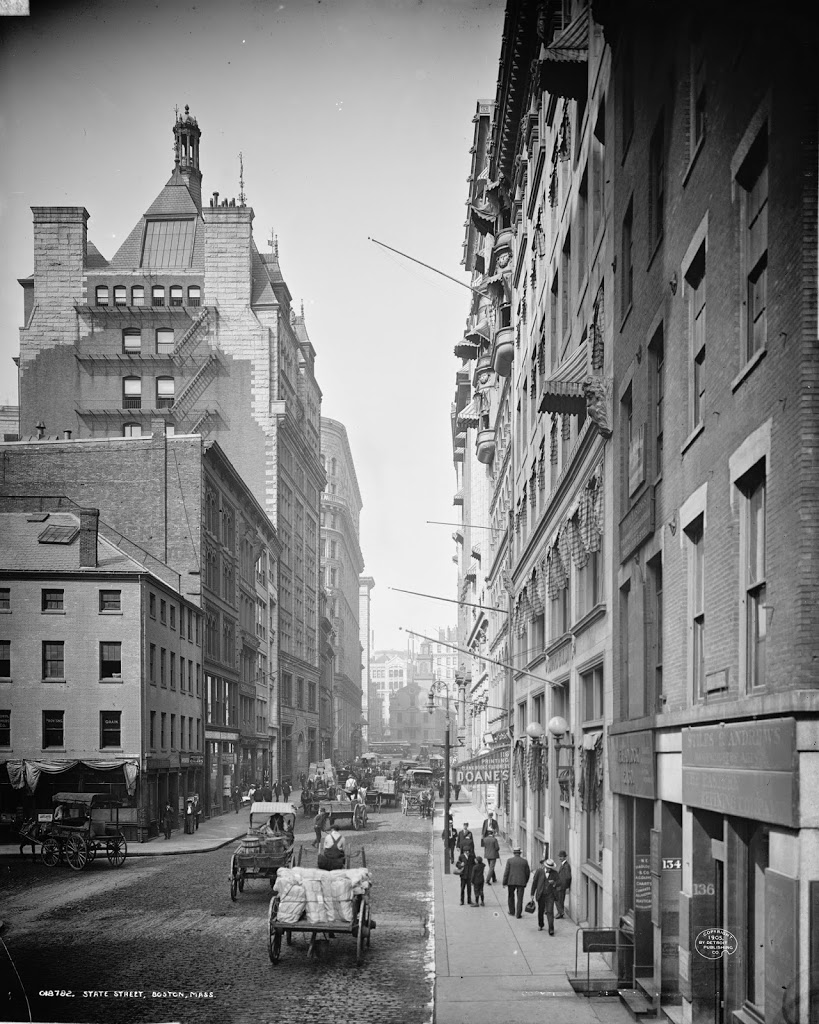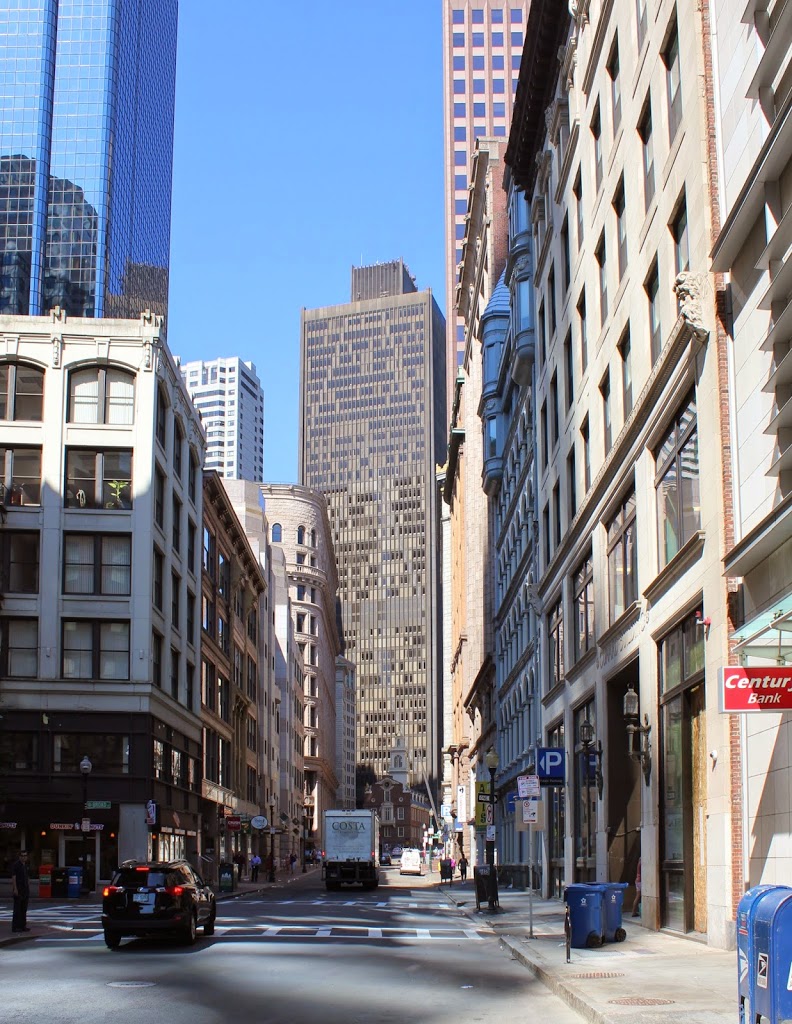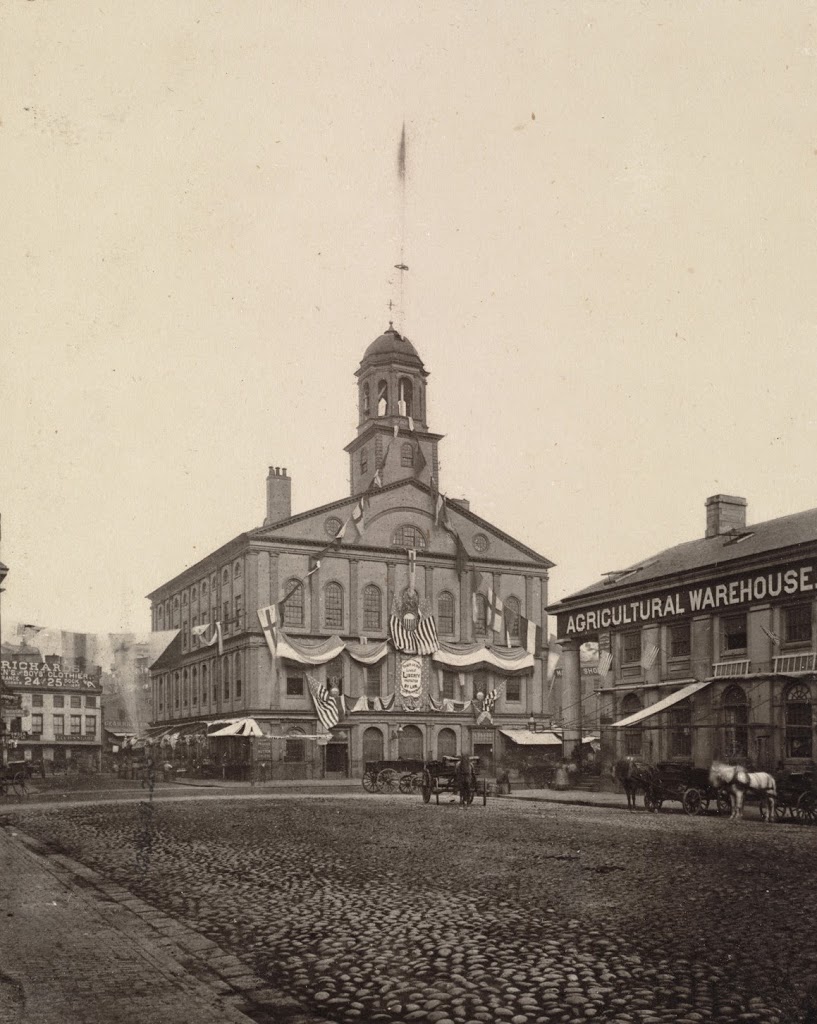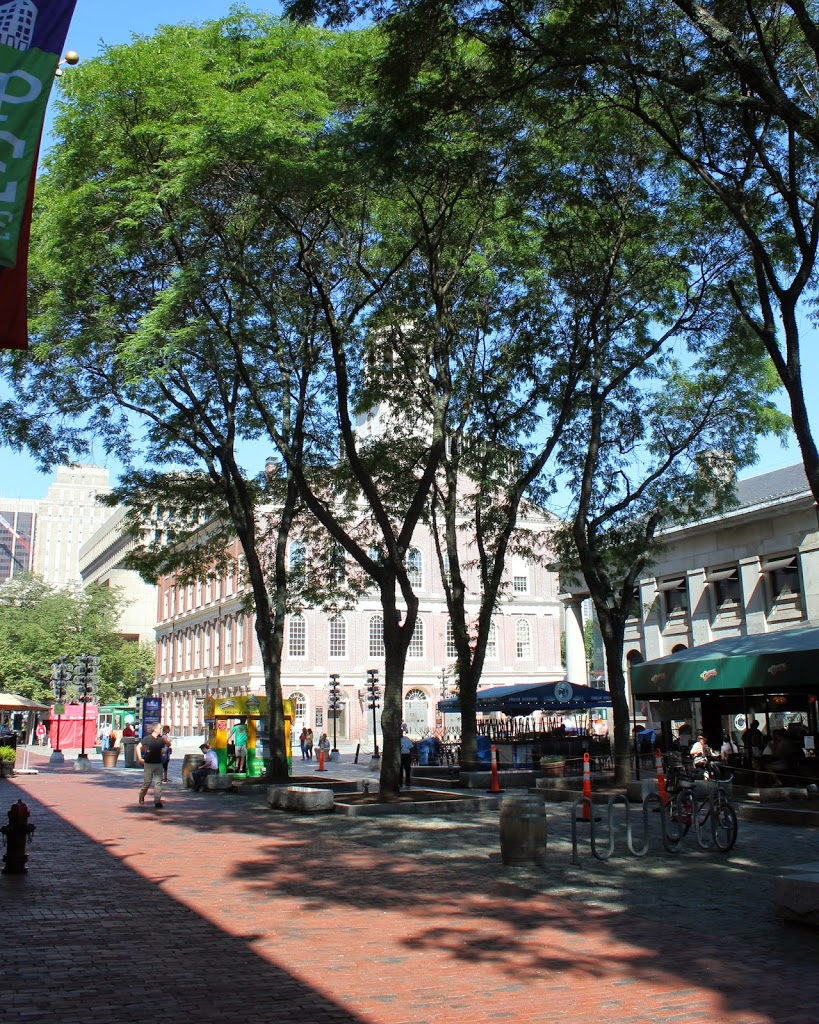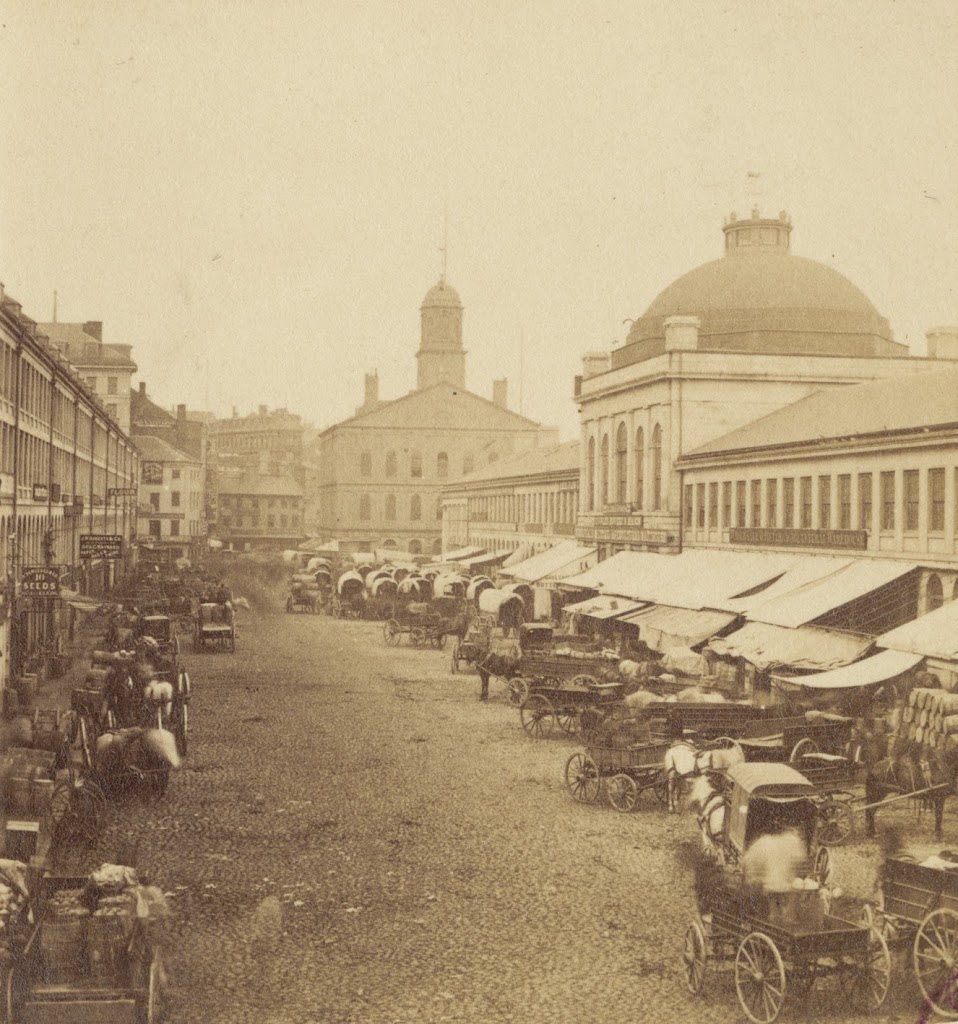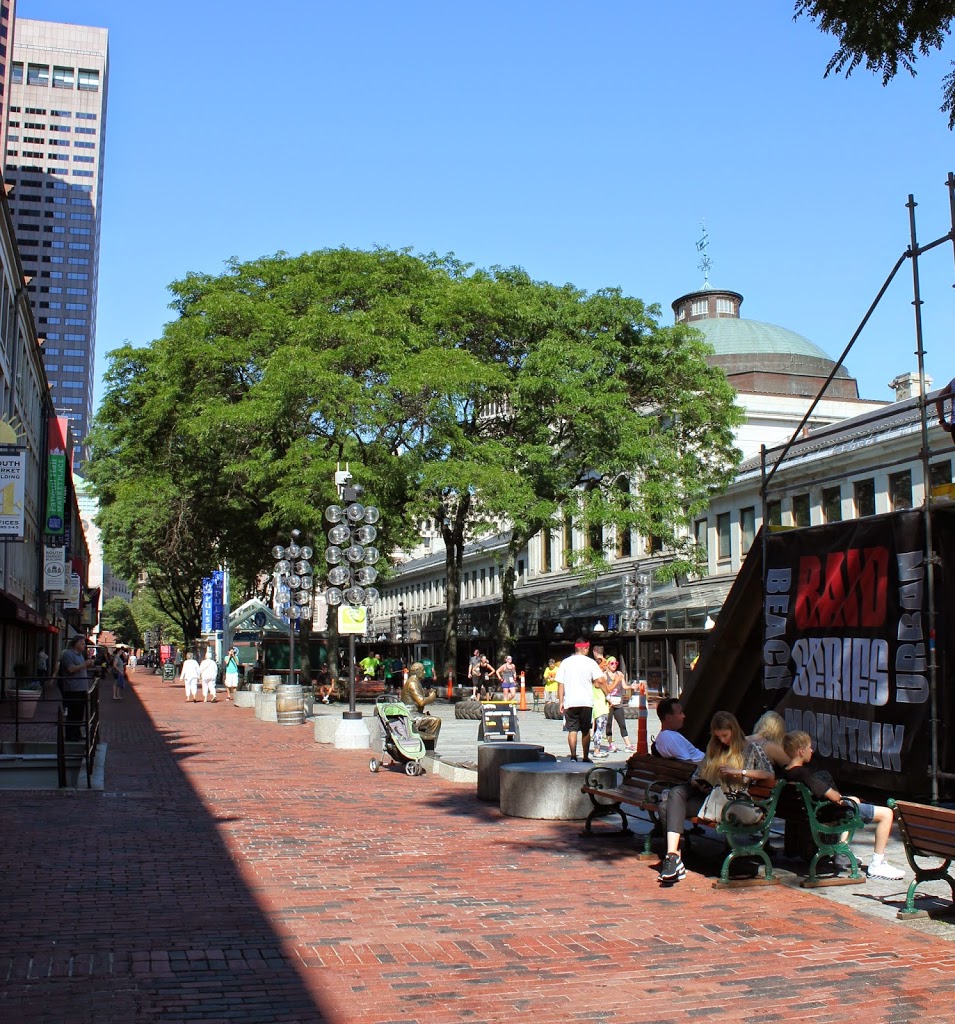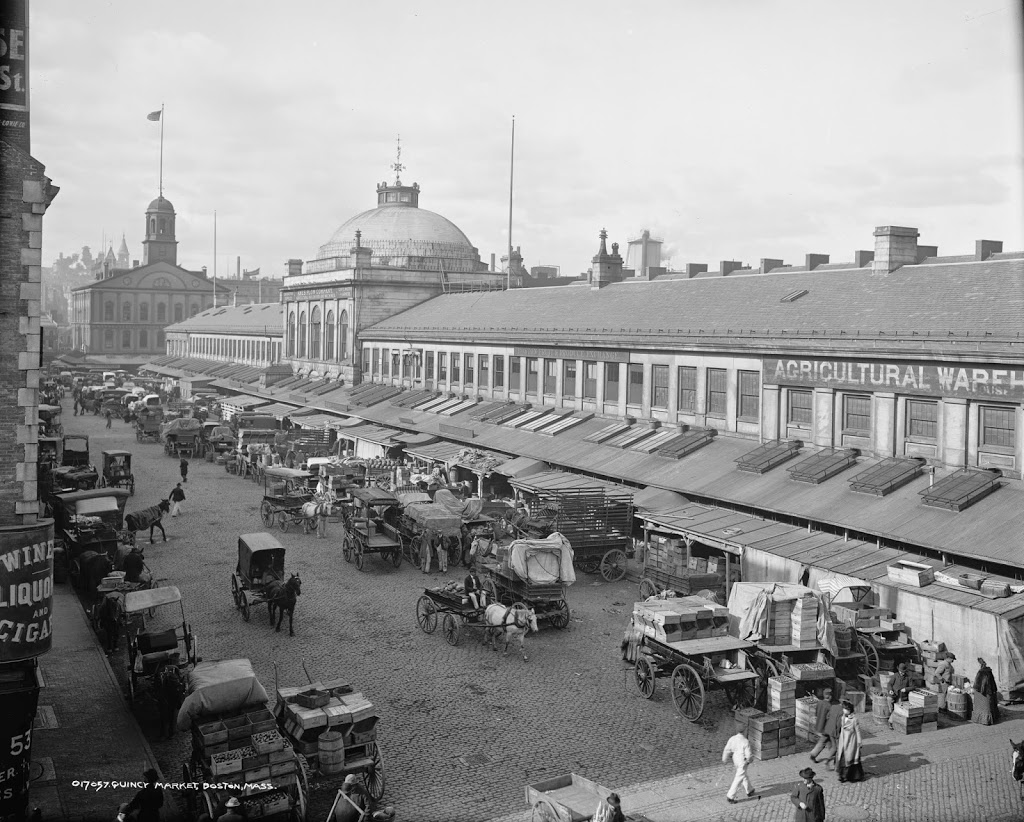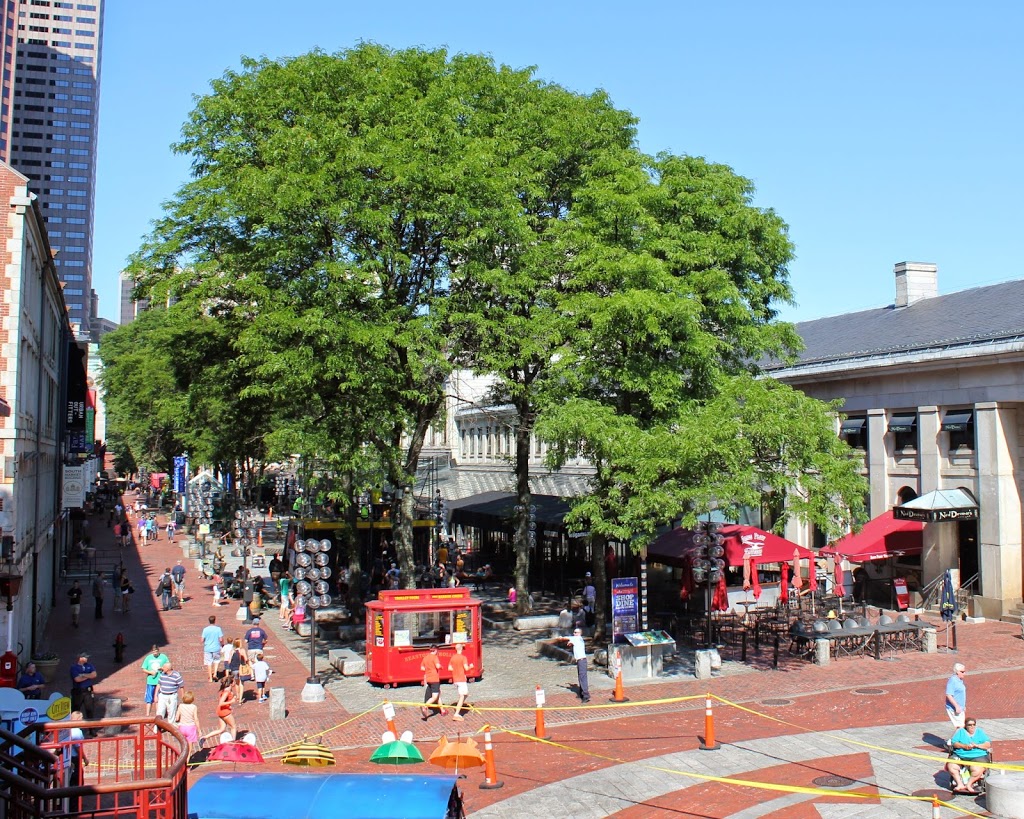Looking up Washington Street from near Franklin Street, toward Old South Meeting House, around 1906. Image courtesy of the Library of Congress, Detroit Publishing Company Collection.
Washington Street in 2014:
These two photos were taken just a block away from the ones in this post. This particular view illustrates some of the changes that Washington Street has seen over the past century. Long before even the first photo was taken, Washington Street was once the only way in or out of Boston by land (hence, “one if by land, two if by sea,” with the land part referring to passing through here). However, subsequent landfill in the 19th century expanded Boston’s land area, and allowed for other routes in and out.
Today, this section of Washington Street is closed to most traffic, and is at the center of the Downtown Crossing shopping district. In that sense, not much has changed – 100 years ago, this area was also a major commercial district, although not many of the buildings survive today. The most prominent is the Old South Meeting House, which has stood at the corner of Washington and Milk Streets since 1729. A few other buildings on the right-hand side, both in front of and behind the church, still exist today, but everything in the foreground has significantly changed.

